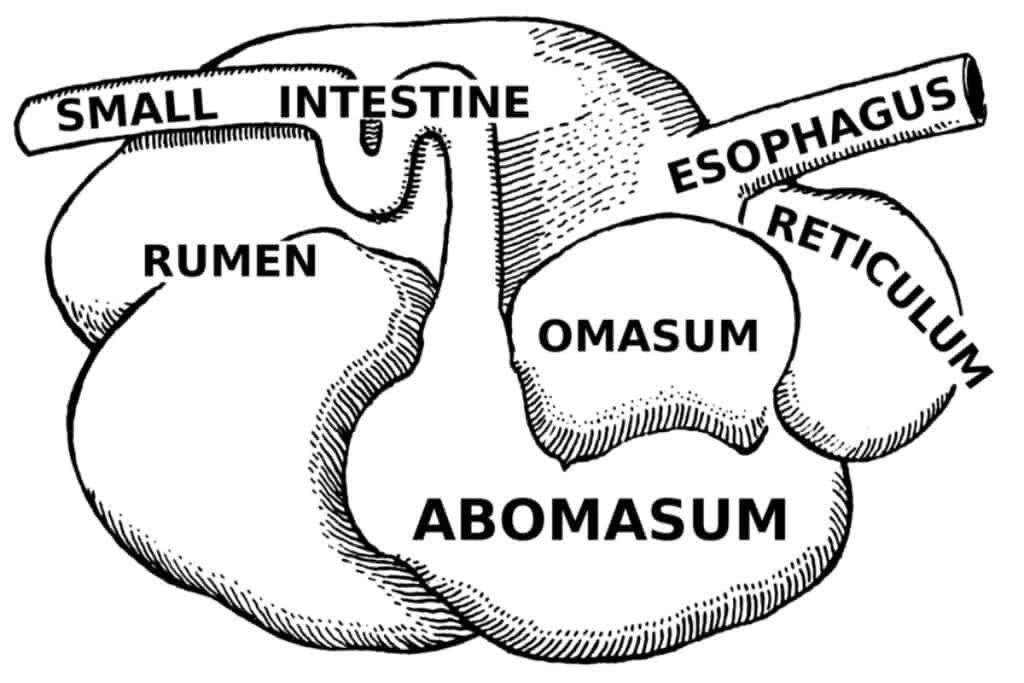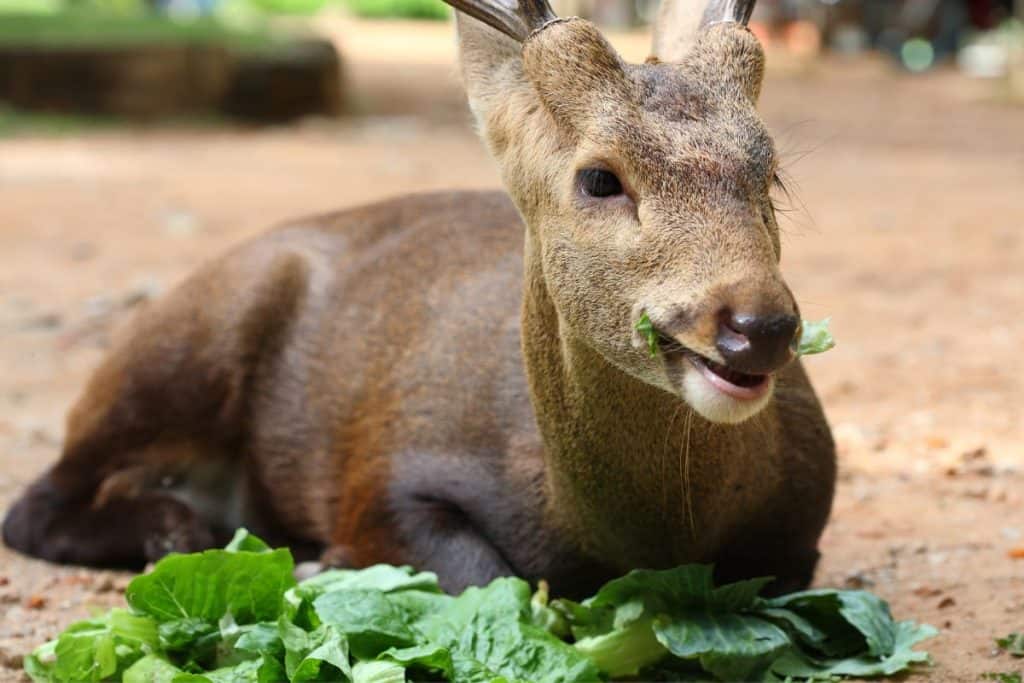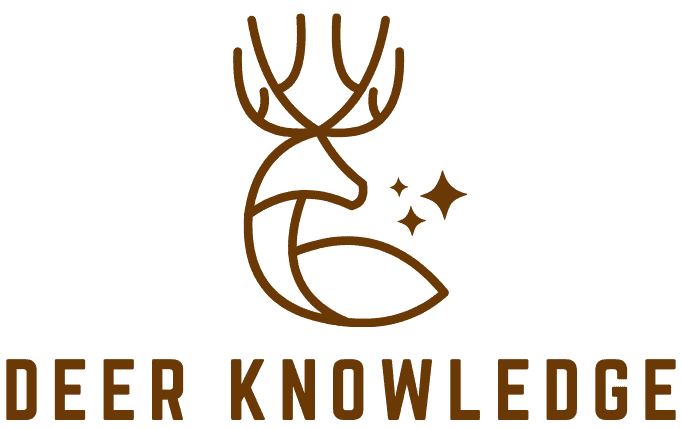Deer are one of the most adaptable species on the planet. With a diet that includes grasses, twigs, and fruit, deer can thrive in almost any environment– even in urban neighborhoods. But in order to digest so many different foods at once (especially the tough bark of trees), a deer’s digestive system needs to be robust.
Similar animals that graze and browse have multiple stomachs; you might well be wondering how many stomachs do deer have in order to sustain such a varied diet.
So, How Many Stomachs Do Deer Have?
Deer have four stomachs, often described as four separate chambers of a singular stomach organ. These separate stomach chambers are the rumen, reticulum, omasum, and abomasum, and they each serve different functions in the process of digestion for deer.
So without further ado, let’s take you through the different functions of the deer stomachs.
Rumen
The rumen is the first stomach chamber that food passes through in the digestive process. It’s the largest stomach chamber and is principally used for storing consumed food. Its function is to allow deer to consume huge volumes of food over a short period so that it can be stored and brought back up later for further chewing.
Once the deer has filled its stomach, it will rest and bring the food back up via the esophagus to chew again – a process known as chewing the cud. During the subsequent chewing sessions, deer break the food down even further so that it’s more easily digested by the other digestive organs.
Animals that chew the cud in this way are known as ruminants, named after the rumen that facilities the process.
Reticulum
The second stomach is known as the reticulum, where the digestion process starts in earnest. Here, the honeycomb-like structure contains millions of microorganisms that attack the food passing through the reticulum.
These microbes and other microorganisms kick-start what is known as the fermentation process (when they attack the food), whereby the food is broken down into less complex molecules which pass through the digestive tract and be absorbed more quickly. The byproduct of these processes is methane, which the deer expels through regular burps.
The remaining food particles then pass onto the third stomach chamber, the omasum.

Omasum
The omasum is a spherical chamber with folds similar to book pages. These folds crucially give the omasum a much large contact surface area with the partially-digested food arriving into it. It’s here that water absorption occurs. Many of the microorganisms extracted from the reticulum are also absorbed, along with other tiny water-borne nutrients.
It’s then onto the last stomach chamber, the abomasum.
Abomasum
This is what many consider the “proper” stomach of the deer, and it functions in a similar way to other non-ruminants, such as humans.
It’s filled with gastric juices, including enzymes and hydrochloric acid. The enzymes are very similar to human enzymes and include pepsin (which breaks down protein into amino acids) and lipase (for breaking down fats into lipids).
What’s left after the abomasum is then more easily absorbed into the bloodstream via the small and large intestines, which are a staggering 28 feet long!
How Long Does it Take for Deer to Digest Food?
Depending on their eating habits, environment, and lifestyle, it takes anywhere from one to three days for deer to digest food. In captivity, however, it typically takes just a single day for the animal to finish digesting its meal.
Deer tend to digest slower in winter when food is scarcer, and temperatures are lower. Their metabolism can drop by as much as 50%, reducing the speed at which their bodies break down food and absorb nutrients.
When food is plentiful, such as in the spring or fall months, digestion becomes much faster to cope with the increased nutritional intake.

Are Deer Ruminants?
Yes, deer ruminants because they regularly chew their food twice before digestion begins. Humans aren’t ruminants because we don’t do this – we simply swallow our food whole and let it pass through our digestive system without being broken down further first.
By contrast, deer chew food brought back up to their mouth from the rumen before swallowing it once more and passing it on to the reticulum. This process is known as chewing the cud, and other animals, such as cows, also do this when eating grass or hay.
Final Thoughts on Deer Stomachs
As you can see, deer digestion is much more complicated and sophisticated than you may have previously realized. With four separate stomach organs and a complex digestive system, it’s easy to see why they’re able to consume such a wide variety of foods without getting ill.
Each stomach chamber has a specific role; the rumen first stores the food for later, the reticulum starts the digestion process via fermentation, the omasum extracts water and microorganisms, and the abomasum breaks down what’s left into easily-absorbed nutrients for the intestinal tract.
So if you were wondering how many stomachs do deer have, you now have the answer.

